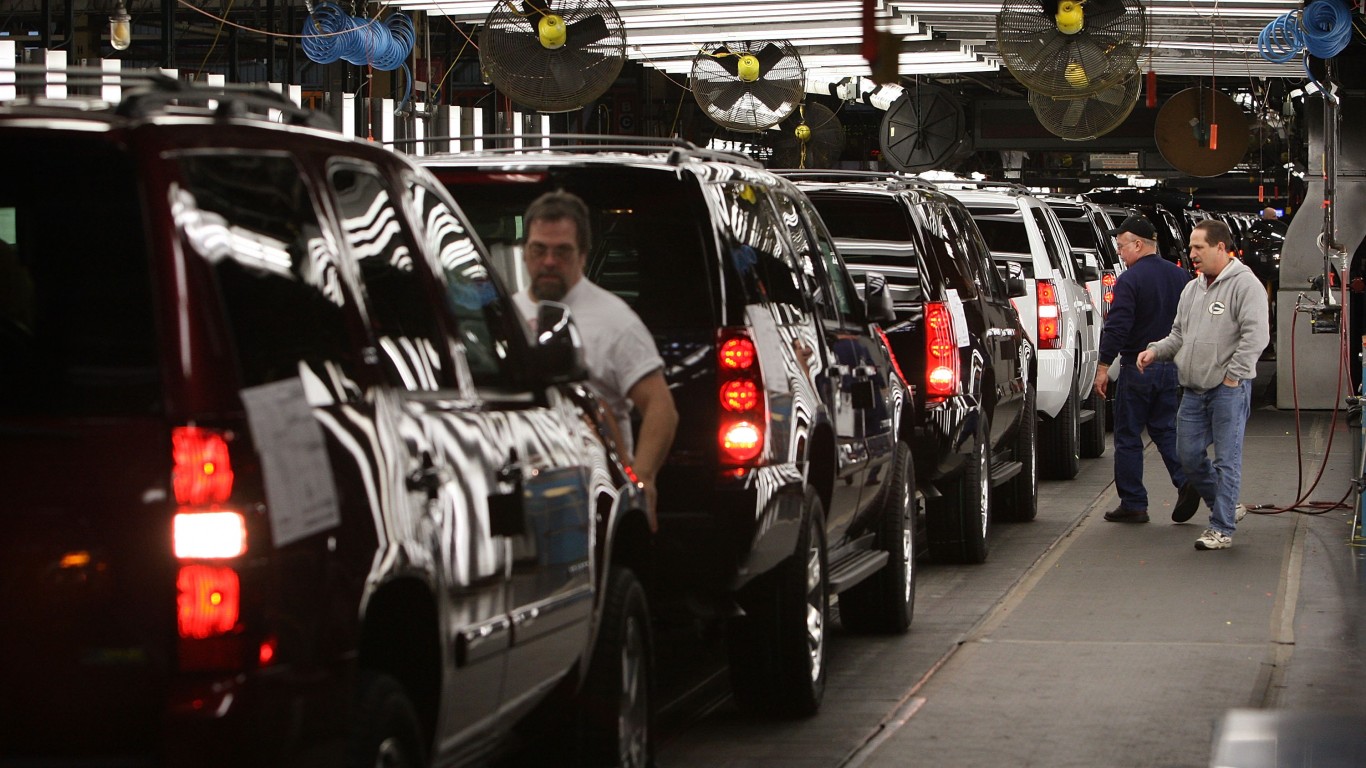Cars and Drivers
New Car Sales Down 8% in 2022 -- and 2023 Will Be Challenging Too

Published:

Every one of America’s 10 leading sellers of new cars saw its share price fall since the beginning of 2022. Eight of those 10 also sold fewer cars than they did in 2021.
The sales leader based on unit sales volume was General Motors Inc. (NYSE: GM). According to Cox Automotive’s forecast for full-year 2022 sales, GM’s sales for the year will reach just over 2.25 million vehicles, up 2.3% compared to 2021 sales.
The next eight automakers are all expected to sell fewer units this year. This group includes Toyota Motor Corp. (NYSE: TM), number two with unit sales of around 2.12 million (down 9.0% year over year); Ford Motor Co. (NYSE: F), down 2.9% with sales of 1.84 million units; and Stellantis N.V. (NYSE: STLA), with expected sales of 1.54 million units (down 13.2%).
At number 10, Tesla Inc. (NASDAQ: TSLA) is forecast to sell nearly 525,000 units, up 48.9% year over year. Yet Tesla’s share price is down about 69% with just two more trading days left in 2022.
Cox has forecast total sales for the year to fall to 13,860,055 units, down 8% compared to 2021 sales.
Here is a chart showing year-over-year sales numbers, along with share price declines. The chart is presented in descending order of share price changes.
| Maker | 2022 Sales | Sales change | Market share change | Share price change |
|---|---|---|---|---|
| Tesla | 524,693 | 48.9% | 1.4% | −69.00% |
| Ford | 1,837,603 | −2.9% | 0.7% | −44.30% |
| GM | 2,253,641 | 2.3% | 1.6% | −42.90% |
| Volkswagen | 555,404 | −13.4% | −0.2% | −35.00% |
| Nissan | 819,989 | −24.1% | −1.3% | −28.80% |
| Toyota | 2,122,665 | −9.0% | −0.2% | −24.87% |
| Hyundai-Kia | 1,470,875 | −1.2% | 0.7% | −24.53% |
| Stellantis | 1,542,301 | −13.2% | −0.7% | −19.38% |
| Honda | 977,363 | −33.3% | −2.7% | −17.08% |
| Subaru | 553,619 | −5.2% | 0.1% | 15.34% |
Volkswagen (VOWY) and Subaru (FUJHY) trade over the counter, while Hyundai-Kia and Nissan do not trade at all in the United States.
The outlook for 2023 is muted, to say the least. Cox Automotive cites 10 trends the analysts think will shape new and used car sales next year.
Start by taking a quick retirement quiz from SmartAsset that will match you with up to 3 financial advisors that serve your area and beyond in 5 minutes, or less.
Each advisor has been vetted by SmartAsset and is held to a fiduciary standard to act in your best interests.
Here’s how it works:
1. Answer SmartAsset advisor match quiz
2. Review your pre-screened matches at your leisure. Check out the advisors’ profiles.
3. Speak with advisors at no cost to you. Have an introductory call on the phone or introduction in person and choose whom to work with in the future
Thank you for reading! Have some feedback for us?
Contact the 24/7 Wall St. editorial team.